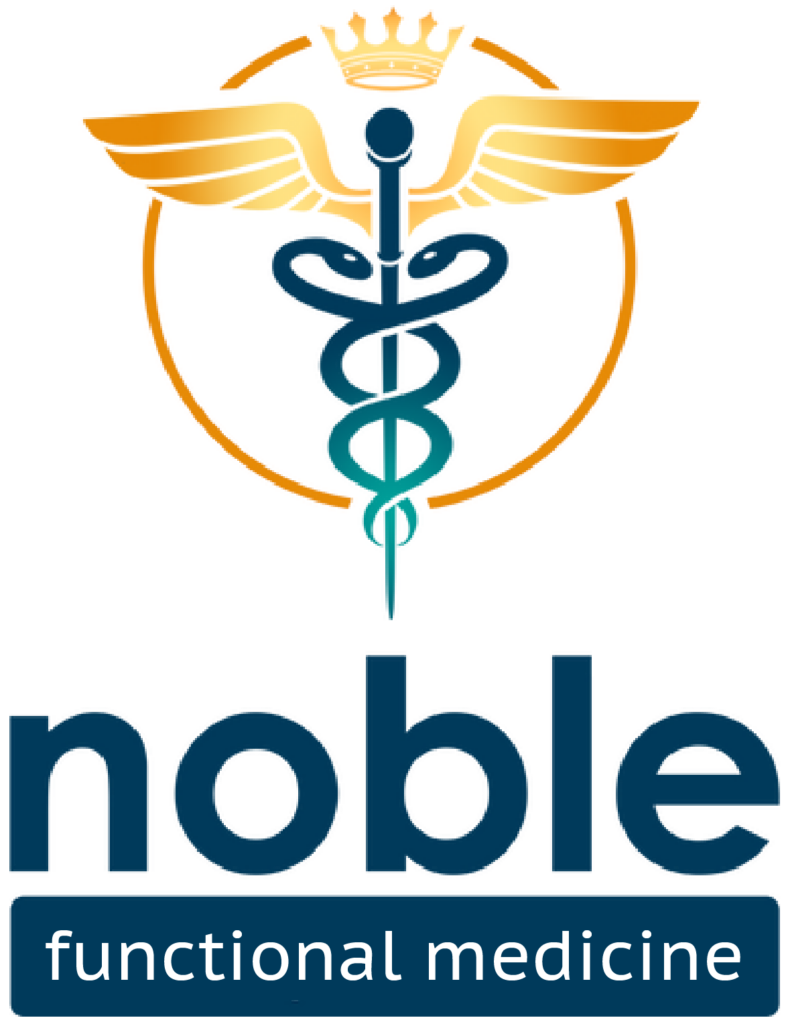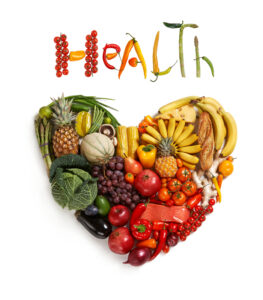Over the last few decades, testosterone levels have gotten lower and lower.¹
Advances in science and technology are allowing us to live longer. But the issue is, our bodies aren’t able to make the hormones we need for this long.
Because of this, we’ve seen a significant rise in a condition called hypogonadism, or low testosterone. This is essentially a condition where the body doesn’t have enough testosterone.
While it’s more commonly searched out and diagnosed in men, women can also have low testosterone.
The causes of low testosterone vary, but getting to the root of what’s causing it is the only way to get the treatment you need. Because sometimes, simply replacing testosterone won’t work. Instead, it will just mask the underlying problem.
But before we go over the treatment of low testosterone, we have to understand exactly what causes it.
What is Testosterone?
Testosterone is a sex hormone that’s responsible for male characteristics like muscle mass, sex drive, and sperm production. Depending on whether you’re a biological male or a female, testosterone is produced in different parts of the body.
After testosterone is produced and released into the bloodstream, it must travel to and connect to receptors in the body to be used. These receptors are called androgen receptors. Some of these receptors recognize testosterone while others need other versions, or metabolites, of testosterone in order to work.
In order for testosterone to travel and bind to androgen receptors in the brain, it must be converted into dihydrotestosterone (DHT). And when we compare DHT to testosterone, DHT binds much better to androgen receptors.
Another metabolite of testosterone is estradiol. This is a form of estrogen that men need in small amounts to help with sex drive, erectile function, sperm production, and bone strength.
In men, testosterone is produced in the testicles. The functions of testosterone include:³⋅⁴
- Maintaining muscle strength and volume
- Growth and development of male sex organs
- Sex drive
- Hair growth
- Voice deepening
- Red blood cell production
- Healthy brain function
- Keeping visceral fat levels down (this is fat stored around the waist)
In women, testosterone is made in the ovaries, the adrenal glands (small glands that sit above the kidneys), and other tissues in the body. Before menopause, women make three times as much testosterone as estrogen. Only about 25% of testosterone is made in the ovaries, and testosterone levels aren’t affected by menopause.⁵
The functions of testosterone in women include:⁶
- Keeping bones strong
- Maintaining muscles strength and volume
- Healthy brain function
- Sex drive
After men reach the age of 30 years, testosterone levels naturally decrease by about 1% each year.⁷ But there are many other causes of low testosterone that cause it to occur in younger men and women.
What is Low Testosterone and Why Does It Matter?
Low testosterone, or hypogonadism, is a condition where the body doesn’t have enough testosterone. It’s defined as a testosterone level less than 300.⁷ This can be caused by either decreased testosterone production in the body or an issue with the body being able to recognize and use testosterone.
Any hormone imbalance, including low levels of testosterone, can wreak havoc on the body. And if left untreated, people with low testosterone can be at a higher risk of conditions such as:⁴
- Insulin resistance, which increases the risk of diabetes
- Metabolic syndrome, which is linked to conditions including high blood pressure, high cholesterol, obesity, and high blood sugar
- Memory issues
- Mood disorders like depression
- Obesity
- Anemia, or low levels of red blood cells
- Osteopenia and osteoporosis, which is thinning of the bones
- Erectile dysfunction
Additionally, the symptoms of low testosterone can also be unpleasant and greatly affect your quality of life.
Symptoms of Low Testosterone Levels
The symptoms of low testosterone can be different between each person, and they vary between men and women.
Men with low testosterone may have signs and symptoms like:⁴
- Erectile dysfunction
- Loss of sex drive
- Mood changes such as depression, anxiety, or irritability
- Decreased energy levels
- Decreased motivation
- Joint pain or stiffness
- Trouble sleeping
- Difficulty concentrating
- Ringing of the ears (tinnitus)
- Decline in physical abilities
For women with testosterone deficiency, symptoms may look a little different. They often include:⁶
- Mood changes
- Fatigue
- Decreased muscle strength
- Thinning of hair
- Decreased sex drive
- Increased body fat
Unfortunately, the symptoms associated with low testosterone are often attributed to the aging process. This means that low testosterone levels in both men and women often go undiagnosed and untreated.
Causes of Low Testosterone
While testosterone levels naturally decrease with age, there are other causes of low testosterone that are making it more common than ever.
Especially in younger people.
I like to compare the production of testosterone to a factory that makes beef jerky. Production of testosterone is overseen by a diligent supervisor, the brain. And then there’s the line workers, the testes, who are pumping out the beef jerky, or testosterone. For women, the line workers would include the ovaries, adrenal glands, and other body tissues.
If the line workers aren’t making enough product, the supervisors will notice this and send more workers to the front lines to make more product. On the other hand, if there’s too much product coming out, the supervisors will recognize this and maybe decrease production.
So when it comes to low testosterone, the first step is figuring out where the problem is. Is it a problem with the supervisor (the brain), or is it a problem at the front lines (the testes, ovaries, adrenal glands, etc)?
A problem with where the testosterone is made is called primary hypogonadism. And an issue with the areas telling the body to make testosterone is called secondary hypogonadism.
Stress and Cortisol
Stress is known to be a big culprit of many medical conditions. When your body is under stress, it releases a hormone called cortisol.
During short periods of stress, cortisol is beneficial to the body. However, when cortisol levels are elevated for long periods of time, health problems can result.
In this case, the higher the level of cortisol, the lower the levels of testosterone.
This unfortunately causes somewhat of a snowball effect. This is because higher levels of cortisol tend to cause poor functioning of the metabolism and muscle breakdown. Both of these cause calorie storage and fat gain which can independently cause low testosterone.
Additionally, stress impacts your metabolism which can lead to weight gain. And higher body fat is linked to low amounts of testosterone.
Obesity
Obesity and high levels of body fat are known to cause low testosterone levels in both men and women. This is because of certain compounds that are made by fat cells which affect hormone production.⁸
Fat cells contain an enzyme called aromatase. This enzyme converts testosterone into estrogen, which is a predominantly female hormone. When this happens, less testosterone is available in the body leading to imbalanced hormone levels. The more fat you have, the more of your testosterone is going to be lost to estrogen.
Traumatic Brain Injury
Head injuries, concussions, car accidents, and falls all have the ability to cause disruptions of hormone levels. In order for the brain to communicate with areas of the body that make testosterone, several connections need to be in place.
If these connections are broken due to head trauma, your body isn’t able to produce enough testosterone. This means that testosterone supplementation is needed.⁹
Environmental Toxins
Certain toxins can greatly impact hormone levels in both men and women. One of these toxins is called Xenoestrogen. Xenoestrogens are chemicals that mimic estrogen in the body and can disrupt hormone production. They’re most often found in:
- Plastics
- Pesticides
- Pollutants
These toxins lead to decreased testosterone levels and are believed to contribute to the rising causes of low testosterone seen today.¹⁰
How is Low Testosterone Diagnosed?
In order to diagnose low testosterone, all that’s needed is a simple blood test. When I check for hormonal balances, I check total testosterone levels. This includes checking both free testosterone and bound testosterone. If your results are abnormal, I typically order additional testing to see if the issue is in the brain or somewhere else in the body.
You can get a blood test done by going to a laboratory or having a phlebotomist come to your home to draw your blood.
Normal testosterone levels are anywhere between 300 and 1,000. However, “normal” ranges may vary between people depending on age and other factors.⁷
Treatment Options For Low Testosterone
Treating low testosterone depends on the underlying cause. This is why it’s so important for your healthcare provider to take time to get a detailed history from you and order all of the necessary blood work.
A personalized approach to hormonal imbalances and overall health can be the difference between treating the underlying disease or simply covering up the symptoms.
For many, testosterone replacement therapy (TRT) is an effective solution for the treatment of low testosterone. But some people may benefit from lifestyle changes alone.
Testosterone Replacement Therapy (TRT)
If you need direct replacement of testosterone, you can be screened to see if you’d be a good fit for TRT. There are so many options for testosterone therapy, making it easy for you to find an option that works for you.
TRT can be done through:¹¹
- Injections
- Patches placed on the skin
- Topical gels
- Patches that stick to your gums
- Nasal spray
- Implants placed under the skin
By replacing testosterone, your testosterone levels will be able to return to a normal range. This will help with symptoms of low testosterone and decrease your risk of developing illnesses related to low testosterone levels.
The Safety of Testosterone Replacement Therapy
It’s important to note that in the past, TRT was believed to be associated with increased prostate size and even prostate cancer. However, the claim was made in 1941, and it’s since been proven wrong. TRT is not associated with increased prostate size or prostate cancer.¹¹
Also, TRT is not linked to a condition called cardiovascular disease, which is a disease that can cause a heart attack or stroke.¹³⋅¹⁴
Ultimately, the safety of TRT comes down to being on the correct dose and taking it at the correct time. If you’re not on the correct dose, your body may produce too much DHT and estradiol too quickly. This can lead to unwanted side effects such as:
- Prostate enlargement
- Hair loss
- Gynecomastia (man boobs)
So making sure you’re on the correct dose of testosterone is key.
Lifestyle Changes
In some cases, testosterone levels can be improved without TRT. This of course depends on the underlying cause of the low testosterone. But for many people, obesity and high body fat are big culprits for low testosterone.
Natural measures I recommend to help improve testosterone levels include:
- Eat enough protein, aim for 45-55 grams per meal
- Get plenty of physical exercise, as this increases natural hormone production and also decreases cortisol levels
- Reduce stress, as this will decrease cortisol levels
- Get enough sleep, aim for 7-8 hours a night
Also, be kind to your liver. Your liver is not only responsible for detoxifying your body, but it’s also responsible for hormonal regulation. If your liver is busy dealing with alcohol, processed foods, excess calories, and other toxins, it’s not going to have a lot of time to deal with your hormones.
Do You Have Symptoms of Low Testosterone?
Low testosterone affects both men and women. The symptoms of this condition are unpleasant and can disrupt your daily life.
If you have symptoms of low testosterone, please don’t ignore it.
A diagnosis is as easy as a simple blood test. And if you’re found to have low testosterone or another type of hormone disorder, don’t worry.
I’ll be with you every step of the way to make sure your treatment plan is geared towards your lifestyle, diet, and other medical conditions.
Click the link below to set up a free discovery call with me today. During our call, I’ll get some basic information from you to see if you’d benefit from further testing for hormonal imbalances or other medical conditions.
References:
1. Secular trends in testosterone- findings from a large state-mandate care provider – (nih.gov)
3. Physiology, Testosterone – (nih.gov)
4. The impact of testosterone in men’s health – (go.jp)
5. Androgen production in women – (fertstert.org)
7. Hypogonadism in men – (endocrine.org)
8. Normal, bound and nonbound testosterone levels in normally ageing men: results from the Massachusetts Male Ageing Study – (nih.gov)
9. A Systematic Review of Testosterone Therapy in Men With Spinal Cord Injury or Traumatic Brain Injury – (nih.gov)
10. Environmental Factors-Induced Oxidative Stress: Hormonal and Molecular Pathway Disruptions in Hypogonadism and Erectile Dysfunction – (nih.gov)
11. Male hypogonadism – (mayoclinic.org)
12. Testosterone and Prostate Cancer: An Historical Perspective on a Modern Myth – (sciencedirect.com)
13. Testosterone therapy and cardiovascular risk: advances and controversies – (nih.gov)
14. Cardiovascular Safety of Testosterone-Replacement Therapy – (nejm.org)




